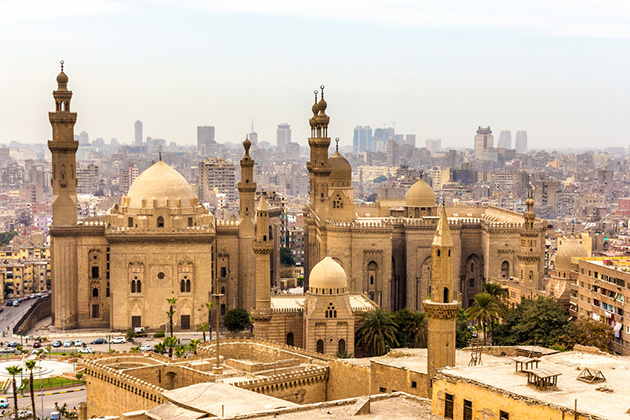Every city around the world has unique characteristics that lend themselves to learning by visitors. Cairo is probably as old as time but when I found myself there on a working visit, I found its uniqueness worthy of emulation by our cities here. I know that some of our cities such as Ibadan and Kano could probably be as old as Cairo but some like Maiduguri, Kaduna, and Abuja are mere toddlers in comparison.
One of the first observations I made was the religious harmony that seemed to pervade the city of Cairo. I entered Cairo during the Easter period and I was pleasantly taken aback to find an ancient Islamic city celebrating a Christian festival as a matter of routine. When I stood outside my dwellings, I saw boisterous little children sharing palm leaves in the streets amidst processions here and there. Their churches are large and elegant and were buoyant and loud on Easter Sunday. The Churches were also conducting their services in the Arabic language. You would easily mistake these churches to be mosques for the uninitiated like myself!
Of course, readers would have to understand that the two great religions have coexisted side by side in Cairo for hundreds of years, through tough and good times. I recall when I asked someone how old the church across the street was, he shrugged his shoulders and said: ‘I don’t know, maybe some few hundred years.’ Cairo is probably more famous for its largest concentration of historical monuments especially mosques that date back to the Rashidunids period of 642 AD. The oldest mosque in Egypt and also Africa is the one built by Amr Ibn El As. The mosque was built in 642 AD. There were also the Sphinx and the pyramids left behind by the Pharaohs long before the Rashidunids arrived in Egypt. As the mosques and other monuments were within short drives from where I was in Cairo, I took advantage to visit as many of them as possible. At the site of the pyramids, one could see how these monuments were made to be money-spinners for both the government and ordinary folks engaged as tour guides, camel riders, keke-napep drivers, shopkeepers, and many others.
For a city as big as Cairo, with a population of over 20 million people, the daily movement of people must be a great challenge. Cairo is said to be one city that experiences traffic snarls during peak periods. I never experienced that. What I saw were well-maintained highways with fast-moving traffic at all times of the day. During Ramadan, the nights would be just as busy as the days with the roads jammed full with vehicles till the wee hours. The unique thing about the Cairo highways and even the adjoining streets is the paucity of traffic lights. The roads have been designed in such a way that traffic from both sides could come into each other without necessarily the aid of traffic lights. Some traffic lights exist but mostly at citizen crossings. In any case, all signposts are written in Arabic using the Arabic alphabet, clearly an advantage for all the driving folk.
Drivers in Cairo exhibit a great deal of self-control. It is one city where I have noticed that drivers on the highways work hard to avoid hitting a crossing citizen. Even on busy high streets, one could contemplate crossing to the other side of the street without fear of being run over by a speeding vehicle. At T junctions, and without traffic lights, drivers exercise a lot of restraint and give regard to other road users. Within the districts, most of the alley roads are designated as one-way. I suppose that sanctions for traffic offences are enforced strictly and with immediacy. The police, in immaculate white uniforms, are everywhere but you hardly notice them unless some infractions occurr.
I stayed in the city district that adjoins another where Mohammed Salah, one of Egypt’s famous sons, now making waves in one of the leading English Premier League clubs, Liverpool FC. He was said to have lived in the district as a boy for a long time. Some evenings and nights when I walked those streets, I got amused when I came across a Salah’s lookalike, with the same shaggy hair and a full beard and wearing the famous no. 10 shirt. It’s a poor neighborhood, densely populated and strewn with alleys. They all live in high-rise apartment buildings with the ground floors serving as shops. You will have the impression of shops lining the streets. The alleys were always full of people, cars, and even donkey-drawn carts selling provisions. The unique thing about these small shops and the apartment buildings would be the absence of the sound of generators. This is to tell you that even the poor neighborhoods in Cairo are well-serviced with constant electricity supplies. The alley grounds are neat, some of them macadamised, with minimum dust, despite the near absence of rain throughout the year.
Religious harmony, monuments as revenue earners for the government and common folks alike, well-mannered drivers, and classy road designs – are great takeaways from the Cairo trip.

 Join Daily Trust WhatsApp Community For Quick Access To News and Happenings Around You.
Join Daily Trust WhatsApp Community For Quick Access To News and Happenings Around You.


